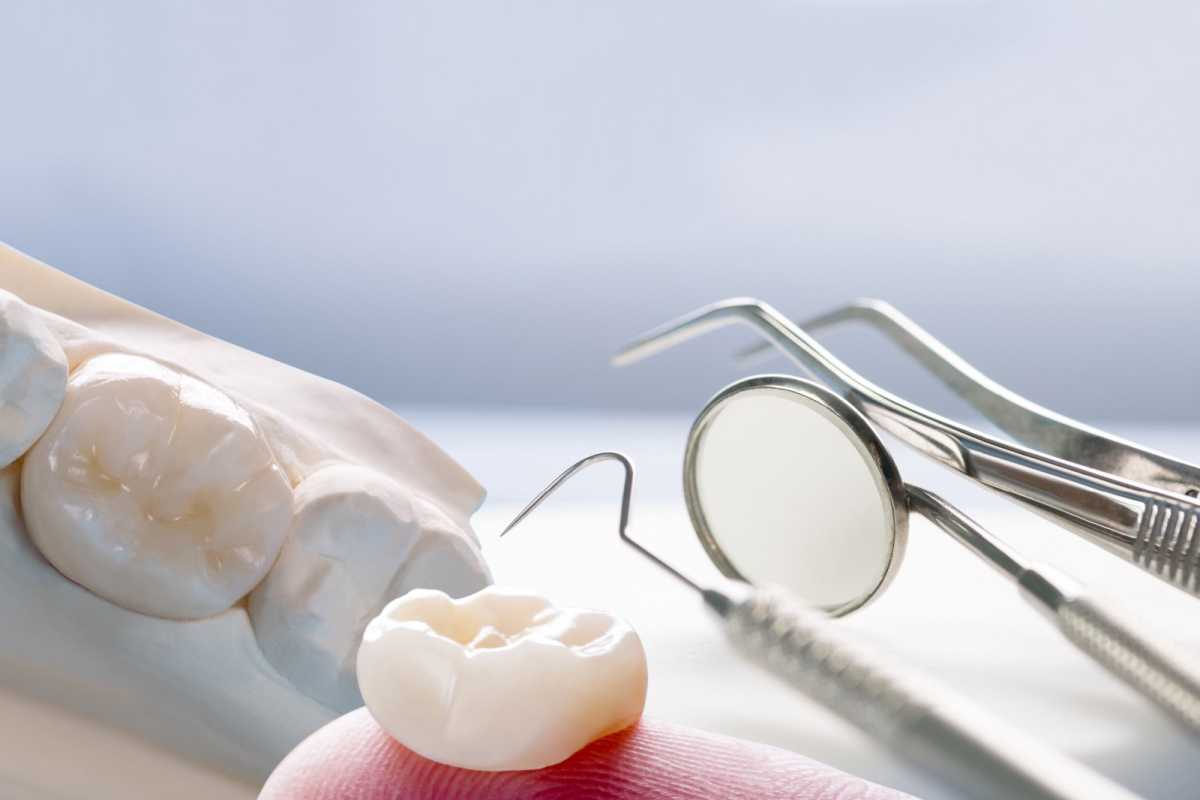Top 10 Concerns That Dental Crowns Can Fix
- - Category: Dental Care
- - 15 Jan, 2024
- - Views: 97
- Save

Dental Crowns
Dental crowns, those unassuming yet robust coverings, hold the power to address various dental issues that might otherwise pose a challenge to treat. Despite their familiarity, many remain unaware of the versatility these tiny prosthetics offer. Let's delve into the practical solutions dental crowns provide for common dental problems:
1. Large dental fillings
If you've had sizable cavities filled with dental fillings, it might have weakened your teeth over time. Dental crowns offer a resilient alternative. When a filling occupies more than half the tooth's width or if cracks at the filling's edges emerge, opting for crowns is often recommended. This ensures long-term tooth strength and minimizes the risk of dental fractures.
2. Cracked or broken teeth
Damaged teeth, whether cracked or broken, demand restoration for everyday functionality. Dental crowns provide a protective shield, enabling you to eat and speak without fear of exacerbating the damage. Beyond functionality, crowns contribute to structural reinforcement, extending the lifespan of your teeth.
3. Worn-down teeth
Daily wear, aggressive cleaning, or conditions like bruxism can erode the outer layer of teeth. Dental crowns become a necessity to regain protective strength akin to natural enamel. Post-treatment, your tooth, now crowned, will boast durability comparable to its natural counterparts.
4. Severely decayed teeth
Extensive decay jeopardizes the structural integrity of teeth, making them vulnerable to fractures. A dental crown, surpassing the resilience of composite fillings, imparts the necessary strength for enduring daily stresses. In cases of severe decay, a dental crown often emerges as a vital measure to prevent tooth extraction.
5. Aesthetic concerns
Dental imperfections, be it minor chips, fractures, or alignment issues, can be effectively concealed by dental crowns. Beyond concealing flaws, crowns allow size, shape, and color customization, seamlessly blending with your natural teeth. Consult your dentist to explore how crowns can address your aesthetic concerns.
6. Uneven bite
Discrepancies in tooth size or shape can disrupt the harmony of your bite. Dental crowns rescue by reshaping teeth, promoting a balanced bite. While crowns address minor irregularities, your dentist may advise more comprehensive treatments like orthodontics for complex bite issues.
7. Tooth Sensitivity
Dental crowns can alleviate tooth sensitivity resulting from enamel erosion. As enamel erosion exposes temperature-sensitive dentin and pulp, crowns act as protective barriers, minimizing discomfort while eating hot or cold foods.
8. Post-root canal protection
After a root canal procedure, where the infected pulp is removed, the remaining tooth structure may be vulnerable. Dental crowns act as protective caps, preserving the integrity of the treated tooth. This ensures that the tooth remains functional and secure against potential fractures.
9. Stabilizing dental bridges
Dental bridges that replace missing teeth rely on adjacent teeth for support. Dental crowns are crucial in stabilizing these bridges by capping the adjacent teeth. This ensures a secure and durable foundation for the dental bridge, contributing to its long-term success in restoring your smile.
10. Enhancing dental implants
Dental implants, artificial tooth roots used to support replacement teeth, often require a visible component above the gum line. Dental crowns are the visible portion of dental implants, providing a natural-looking and fully functional tooth replacement. This ensures that the dental implant seamlessly integrates with the rest of your teeth.
The bottom line
Dental crowns emerge as versatile solutions, offering both functional and aesthetic benefits. Their ability to strengthen, protect, and enhance the appearance of teeth makes them indispensable in addressing an array of dental concerns. Dental crowns are reliable allies in ensuring optimal oral health, whether you seek structural reinforcement or smile enhancement.


